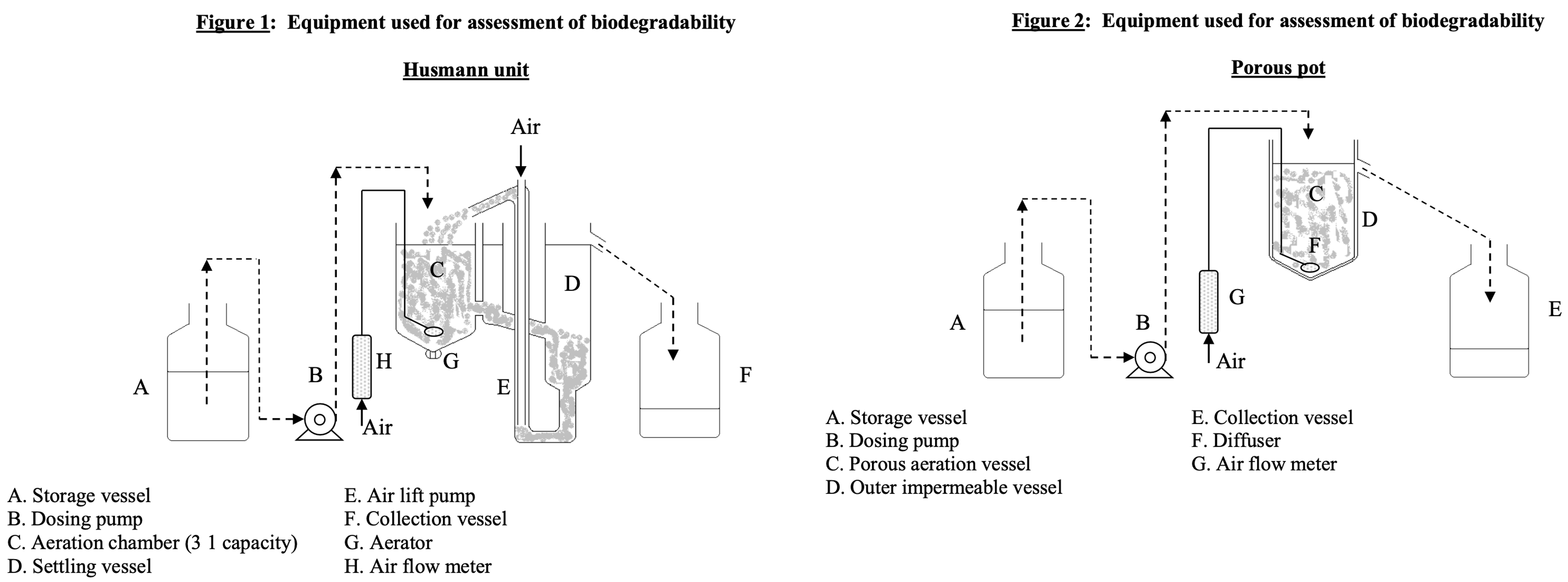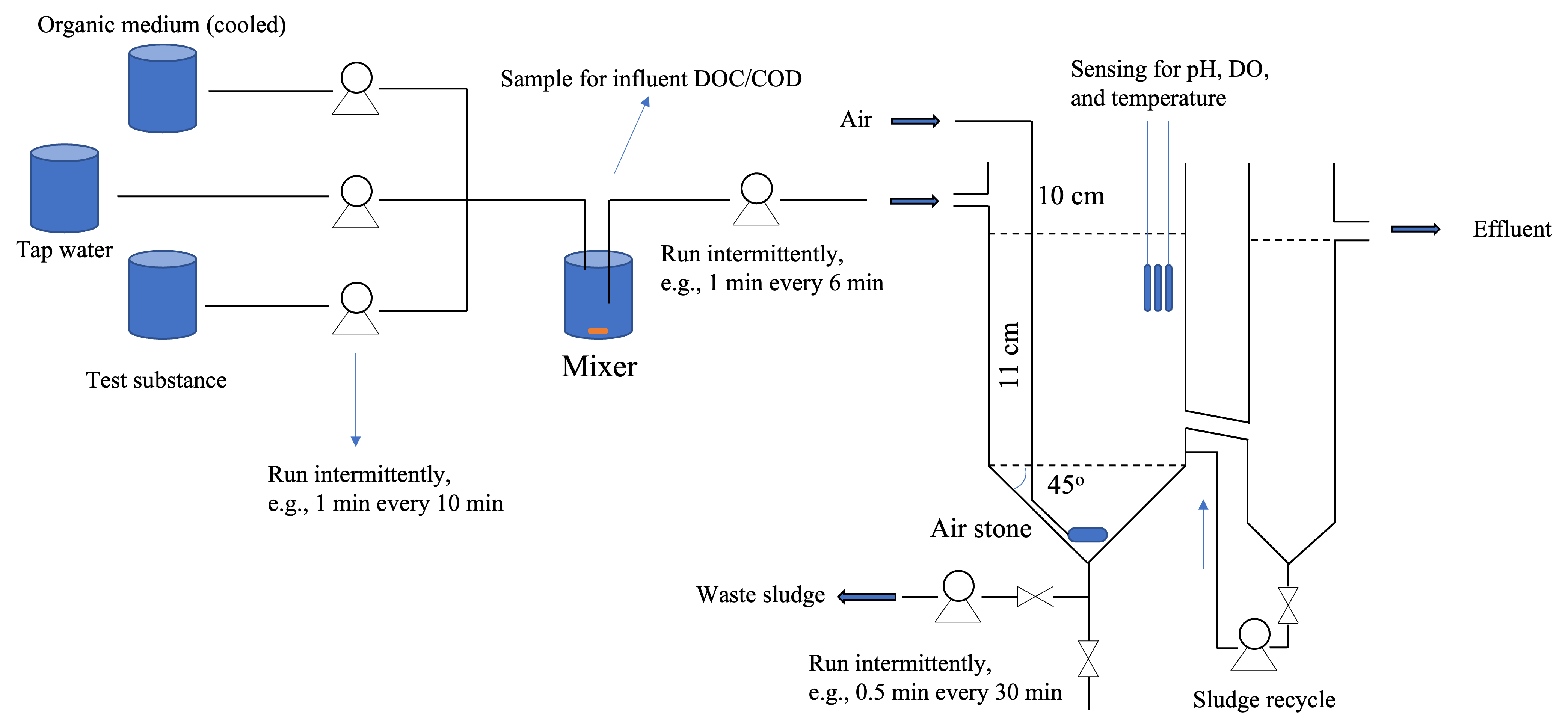OECD 303 Simulated Biodegradation
Concept
Less commonly used than OECD 301 and 302, OECD 303 is designed to evaluate the primary and/or ultimate biodegradation of water soluble organic materials in a continuously operated activated sludge system simulating the realistic wastewater treatment process. The dosage of the test compound is generally between 10 and 20 mg DOC/L, and the biodegradation percentage is calculated based on the DOC/COD removal.
OECD 303A Activated Sludge Units
The OECD 303A Activated Sludge Unit measures the DOC/COD removal during biodegradation. Two parallel units are generally used, one containing organic medium only as a blank control, while the other containing both organic medium and the test compound. The difference of the DOC removal between the two units is believed to be the contribution of the test compound.
This method cannot be used for testing insoluble or volatile materials.
No specific pass levels have been defined for this tier of tests. It would have to be related to the specific operating conditions and system design.
Two system setups are documented by this guideline, including the Husmann unit, and the Porous pot unit, as shown below.

Key summaries of 303A
- Measurement: DOC (or COD) and/or substance itself.
- Carbon source: easily biodegradable organic medium and test compound.
- Duration: normally 9 weeks, no more than 12 weeks.
- Two system, one test and one blank control (to determine the degradation of the organic medium).
- Blank control is not required if the substance itself can be measured.
- Reference control is not required but the reference (e.g., adipic acid, 2-phenyl phenol, 1-naphthol, diphenic acid, and 1-naphthoic acid) may be added occasionally together with the test substance.
- Mean hydraulic retention time: 6 h.
- Mean sludge age (retention time): 6-10 day.
- Test substance dosage: 10-20 mg/L of DOC.
- Initial activated sludge dosage: 2.5 g/L suspended solids.
- Distinguish from bio-adsorption: by examining the elimination-time curve and confirming with a ready biodegradation test using an acclimatized inoculum from the unit.
- Sampling: filtration with membrane filters (0.45 μm) or centrifugation (40,000 m/s2).
- Test substance requirement: normally involatile and soluble, able to calculate DOC or COD.
- Reproducibility: errors usually within 10-15% for substances degraded more than 80%. Lower degradation, larger error.
- Little difference between the two apparatus (Husmann units and porous pots), but real sewage water may be better than synthetic one.
Applicability
| Test | Analytical method | Sample info required | Poorly soluble | Volatile | Adsorbing |
|---|---|---|---|---|---|
| OECD 303A (Activated sludge unit) | DOC and/or COD | Carbon content and/or COD | - | - | - |
A practical setup
Below is a practical system setup for OECD 303A. The pumps and sensors are controlled with a computer to run automatically.
